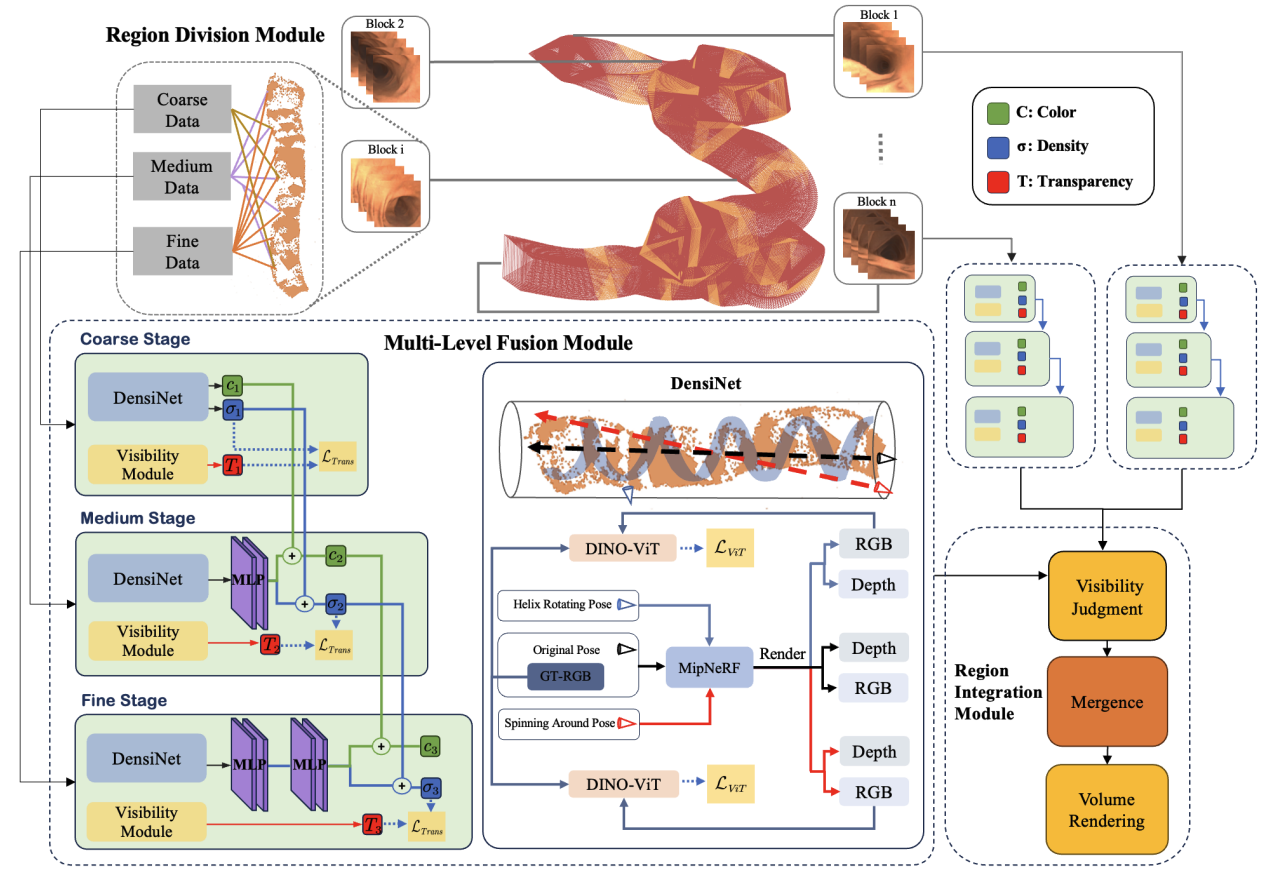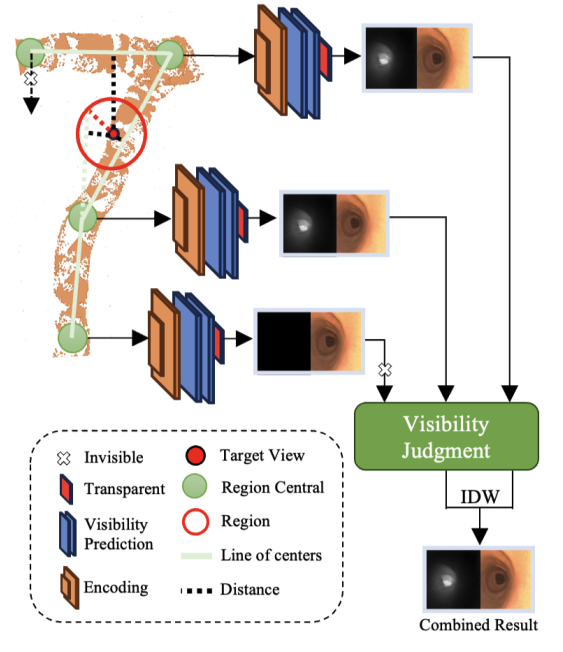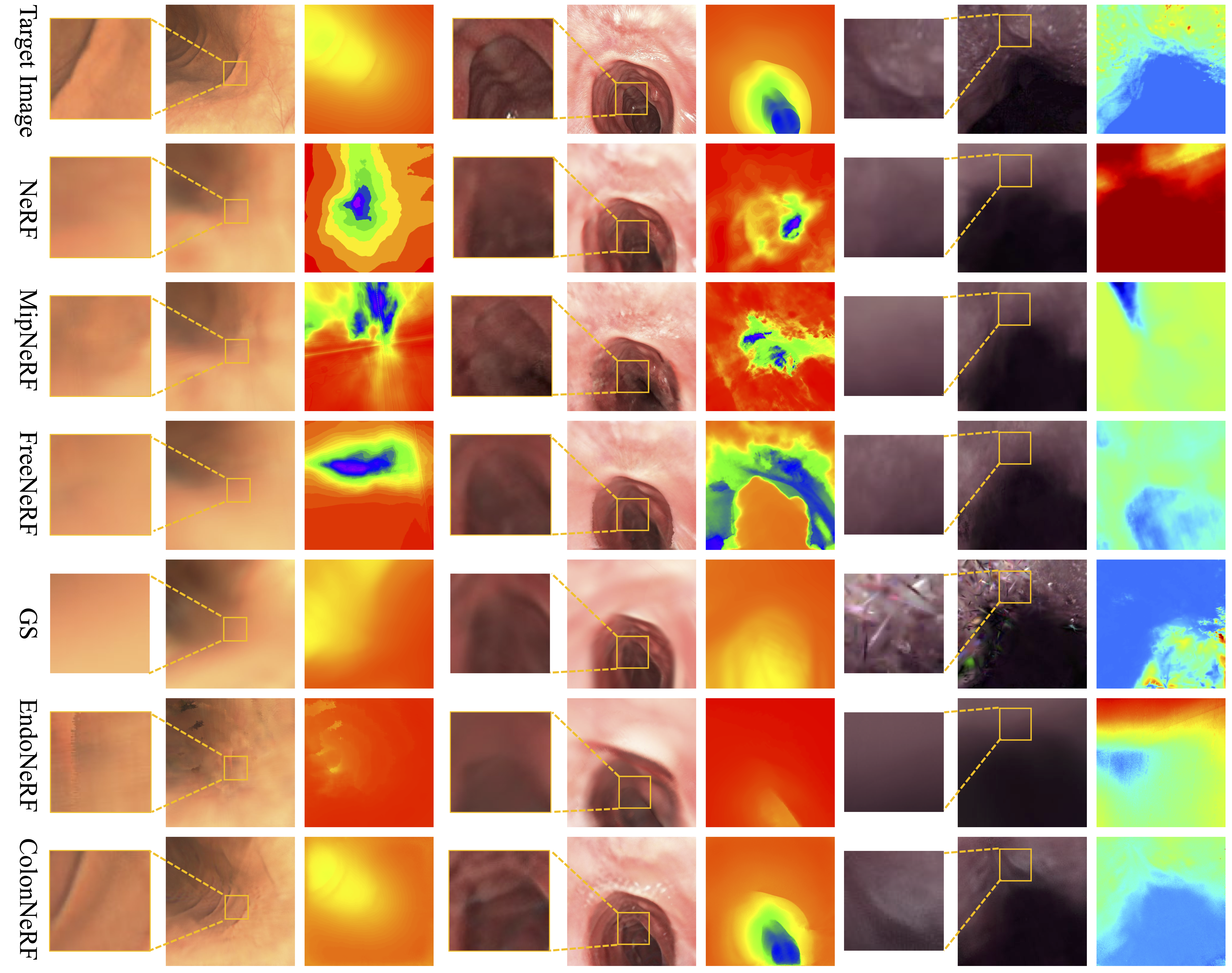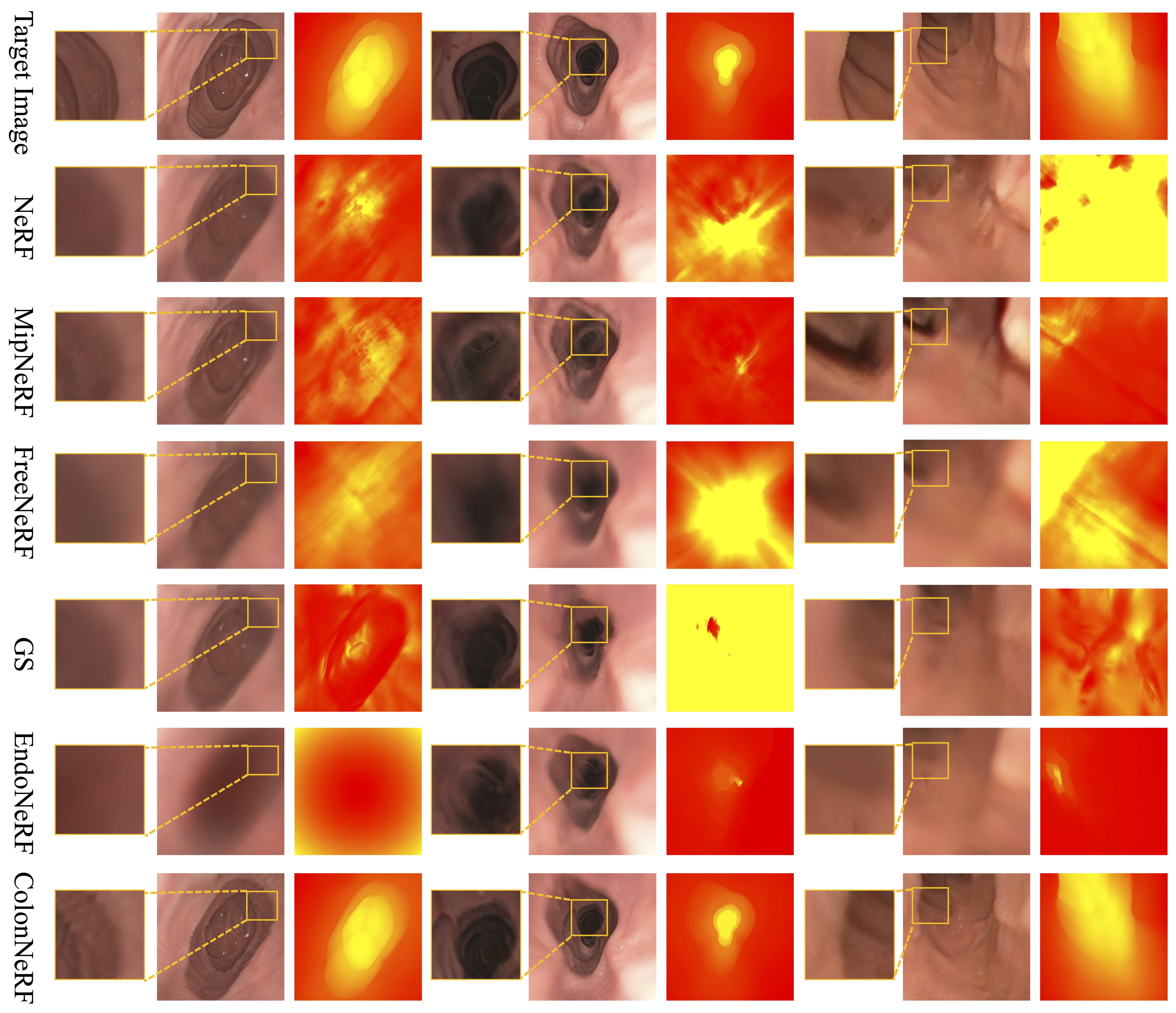ColonNeRF: High-fidelity neural reconstruction of long colonoscopy
Abstract
ColonNeRF introduces a novel approach to high-fidelity neural reconstruction of long colonoscopy sequences using Neural Radiance Fields (NeRF). Traditional colonoscopy reconstruction methods face significant challenges due to the complex geometric structures of the colon, dissimilarity among colon segments, and sparse viewpoint constraints.
Our method leverages Neural Radiance Fields to achieve comprehensive 3D reconstruction of the entire colon structure from endoscopic video sequences. The approach incorporates region division and integration modules, multi-level fusion techniques, and semantic consistency-guided pose densification to overcome the inherent challenges in colonoscopy reconstruction.
ColonNeRF demonstrates superior performance on benchmark datasets, achieving significant improvements in reconstruction quality and providing detailed geometric and texture representation of colon structures for enhanced medical diagnosis and surgical planning.
Key Contributions
- Novel NeRF-based Framework: First neural radiance field approach specifically designed for comprehensive colonoscopy reconstruction
- Piecewise Colon Reconstruction: Innovative region division and integration strategy to handle dissimilar colon segments
- Progressive Geometry Modeling: Multi-level fusion module for handling complex geometric structures
- DensiNet Integration: Semantic consistency-guided pose densification for improved reconstruction quality
Method Overview
ColonNeRF employs a Neural Radiance Field (NeRF) architecture specifically adapted for the unique challenges of colonoscopy reconstruction:

The framework incorporates the following key components:
- Region Division Module: Segments the colon into manageable regions to handle structural dissimilarity
- Integration Framework: Combines multiple region reconstructions into a coherent 3D model
- Multi-level Fusion: Addresses complex geometric structures through progressive modeling
- DensiNet: Densifies camera poses using semantic consistency guidance

The framework addresses three key challenges in colonoscopy reconstruction: dissimilarity among colon segments, complex geometric structures, and sparse viewpoint constraints. By leveraging the implicit representation capabilities of NeRF, ColonNeRF achieves high-fidelity reconstruction of the entire colon structure.
Results & Performance
ColonNeRF demonstrates state-of-the-art performance on colonoscopy reconstruction benchmarks:
- SimCol-to-3D Dataset: LPIPS-ALEX scores improved by 67%-85% compared to existing methods
- Texture Quality: Significant enhancement in texture clarity and detail preservation
- Geometric Accuracy: Superior reconstruction of complex colon geometric structures
- Long-sequence Handling: Robust performance on extended colonoscopy sequences


The method's ability to achieve high-fidelity reconstruction of long colonoscopy sequences makes it particularly valuable for medical applications requiring detailed 3D visualization of colon structures for diagnosis and surgical planning.
Technical Innovation
ColonNeRF introduces several technical innovations to address the unique challenges of colonoscopy reconstruction:
- Adaptive Region Processing: Handles varying colon segment characteristics through intelligent region division
- Semantic Pose Densification: Improves viewpoint coverage using semantic consistency guidance
- Progressive Reconstruction: Multi-level approach to handle complex anatomical structures
- Integration Strategy: Seamless combination of region-based reconstructions into unified models
Impact & Applications
ColonNeRF represents a significant advancement in medical imaging and 3D reconstruction, with applications including:
- Medical Diagnosis: Enhanced visualization for improved polyp detection and diagnosis
- Surgical Planning: Detailed 3D models for pre-operative planning and simulation
- Medical Education: High-fidelity 3D reconstructions for training and educational purposes
- Clinical Documentation: Comprehensive 3D records of colonoscopy examinations
Citation
@article{shi2025colonnerf,
title={ColonNeRF: High-fidelity neural reconstruction of long colonoscopy},
author={Shi, Yufei and Lu, Beijia and Liu, Jia-Wei and Li, Ming and Yeo, Si Yong and Shou, Mike Zheng},
journal={Neurocomputing},
pages={131445},
year={2025},
publisher={Elsevier}
}